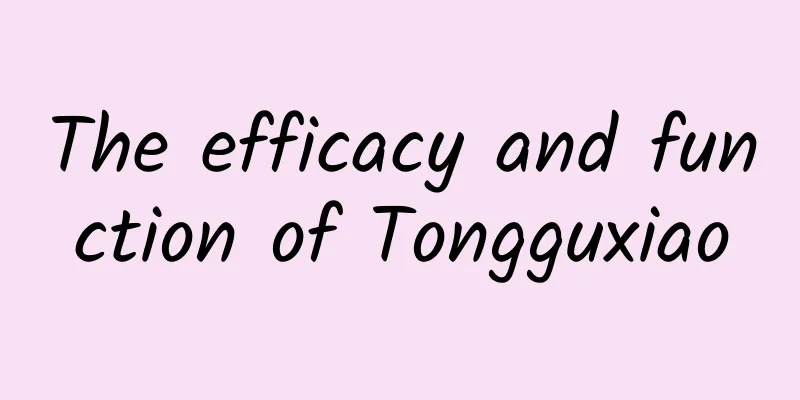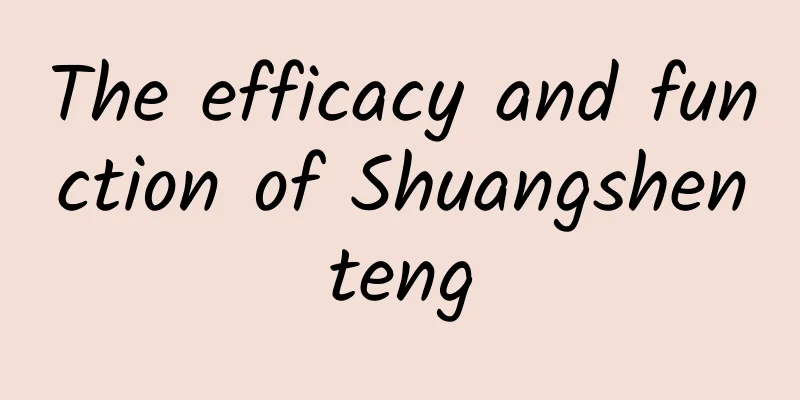The efficacy and function of Yishan ginseng

|
Yishan ginseng is actually ginseng, a very rare medicinal material that grows in Changbai Mountain. As the saying goes, there are three treasures in Northeast China: ginseng, sable fur, and deer antlers. Mountain ginseng is a kind of ginseng, so it also likes to grow in cold forests. People in the Changbai Mountain area often go to the mountains to find Yishan ginseng and sell it for money to earn a living. Below I will introduce to you the effects and functions of Yishan ginseng. Mountain Ginseng - Mountain ginseng is a rare medicinal material, produced in the primeval forest of Changbai Mountain. It mainly grows in hillside broad-leaved mixed forests at an altitude of 2200-1000 meters and a canopy density of 0.7-0.8. The distribution area generally has the characteristics of a humid temperate monsoon climate, and it mostly grows in places facing the east and west, shaded and sheltered from rain. Wild ginseng is the most effective ginseng. Due to its rare production and remarkable tonic effect, it enjoys a very high reputation in the world and is known as the "magic herb that brings the dead back to life." Yishan ginseng is a kind of wild ginseng. There are two types of mountain ginseng: "mountain ginseng" and "home ginseng". "Mountain ginseng" refers to the ginseng that farmers find when they are in the mountains. The current wild ginseng seedlings are not suitable for trading due to their weight and small age, so they are gathered and transplanted to the mountains and forests near homes for easy care and to allow them to grow naturally. "Home transplantation" means that ginseng farmers transplant the ginseng seedlings grown in the garden to the mountains and forests, without watering or fertilizing, allowing them to grow naturally in the wild environment. Historically, it has been called Yang ginseng, Shan ginseng Pahuo, Shanpa, and Biezhi ginseng. In the new national standard "Quality Standards for Classification of Wild Ginseng" which came into effect on March 1, 2004, wild ginseng transplanted, mountain transplanted, home transplanted, seedling transplanted, seedling transplanted, and pond bottom transplanted are classified as transplanted ginseng (the national standard for transplanted ginseng is currently under review). Based on this, the scope of transplanted ginseng is very clear. : : : : : : : : : : : : : : : According to Director Fang Tufu, who has extensive research on ginseng. At that time, Northeast my country had become the main production area of wild ginseng. As the imperial court implemented official ginseng collection, the ginseng near Liaodong was almost completely collected in a very short period of time. Ginseng production is decreasing. At that time, people discovered large areas of small ginseng seedlings (called Yang ginseng, also called small twisted ginseng) in the undeveloped areas on both sides of the Wussuri River. They were all over the mountains and plains. Later, the place was called the "Wussuri River Ginseng Field". The ginseng pickers in Dunhua then gathered these underweight wild ginsengs and moved them to the mountain valleys near Dunhua to take care of them. When they were heavy enough, they would dig them out and hand them over to official ginsengs to make up the number or sell them on the market. This so-called rice ginseng in history is commonly known as the mountain-moving ginseng. As the number of farmers growing ginseng continued to increase, ginseng cultivation became increasingly popular and later formed an industry. Because this kind of mountain ginseng is less potent than wild ginseng and local officials are often unable to identify it, the Qing government, in order to ensure the quality of official ginseng, repeatedly issued bans and strictly ordered local officials to investigate and seize it, and even sent troops to clear ditches and burn camps. Soon the Far Eastern territory east of the Ussuri River was ceded. Large ginseng became rare and small seedling ginseng was also difficult to find. The mountain ginseng cultivation industry gradually shrank and died out due to a lack of seedlings. Until the 1950s, the market supply of Yishan ginseng was still negligible. Fang Tufu said that the ginseng seedlings were indeed grown in the wild mountains, but due to their small weight, they were not suitable for harvesting, so they were transplanted to the mountains and forests near homes to allow them to grow naturally, which made them easier to care for. This kind of ginseng seedling is usually transplanted for more than 10 years, and its weight can double rapidly due to the fertile soil in the new land. This is the traditional meaning of Yishan ginseng. Fang Tufu particularly emphasized that the native habitat of the mountain-transplanted ginseng must be wild mountains and forests, and the transplanting site must also be wild mountains and forests. Only when the young ginseng that has been moved grows for more than 10 years can it be called true mountain-transplanted ginseng. It has extremely high medicinal value and has the remarkable effects of replenishing qi and strengthening the body, improving intelligence and calming the mind, prolonging life and beautifying. It is usually used for physical weakness after illness, loss of appetite, treatment of cardiovascular disease, stomach and liver disease, diabetes, neurasthenia, forgetfulness and insomnia, etc., especially "Single Ginseng Soup", which is very effective in rescuing critically ill patients. |
<<: The efficacy and function of golden cicada flower
>>: The efficacy of drinking water soaked with lantern grass
Recommend
The efficacy and function of wild lentil
Nowadays, our living standards are constantly imp...
The efficacy and function of thorny water chestnut
Echinops is a kind of traditional Chinese medicin...
That grill master may be a master of chemistry
Editor’s Note: Barbecue is nature's gift to m...
AI draws quickly and well, so how does it draw?
Welcome to Science Popularization China’s special...
How to take deer antler slices to improve sexual performance
Deer antler slices are actually a kind of medicin...
Is there a real "tree demon" hiding in the forest? Not only does it scream, it also gives you information.
All living things, when in danger, will convulse,...
What are the effects of drinking water soaked with divinyl wood?
I believe that many people have heard of the meth...
The efficacy and function of tree tiao
Do you know what tree tiao is? If you know, do yo...
The efficacy and function of water chestnut shell
In fact, the occurrence of many human diseases is...
The efficacy and function of lamb trotter
Chinese medicinal materials have good effects on ...
The efficacy and function of rock shanzhi
Yanshanzhi is a famous traditional commonly used ...
Does your stomach really get bigger the more you eat? Does dieting shrink it? The truth is...
Myth: "The more you eat, the bigger your sto...
Without bicycles, we can't even take a plane!
June 3rd of each year is World Bicycle Day. The b...
How to preserve snow lotus
I believe everyone has heard of the Tibetan medic...









